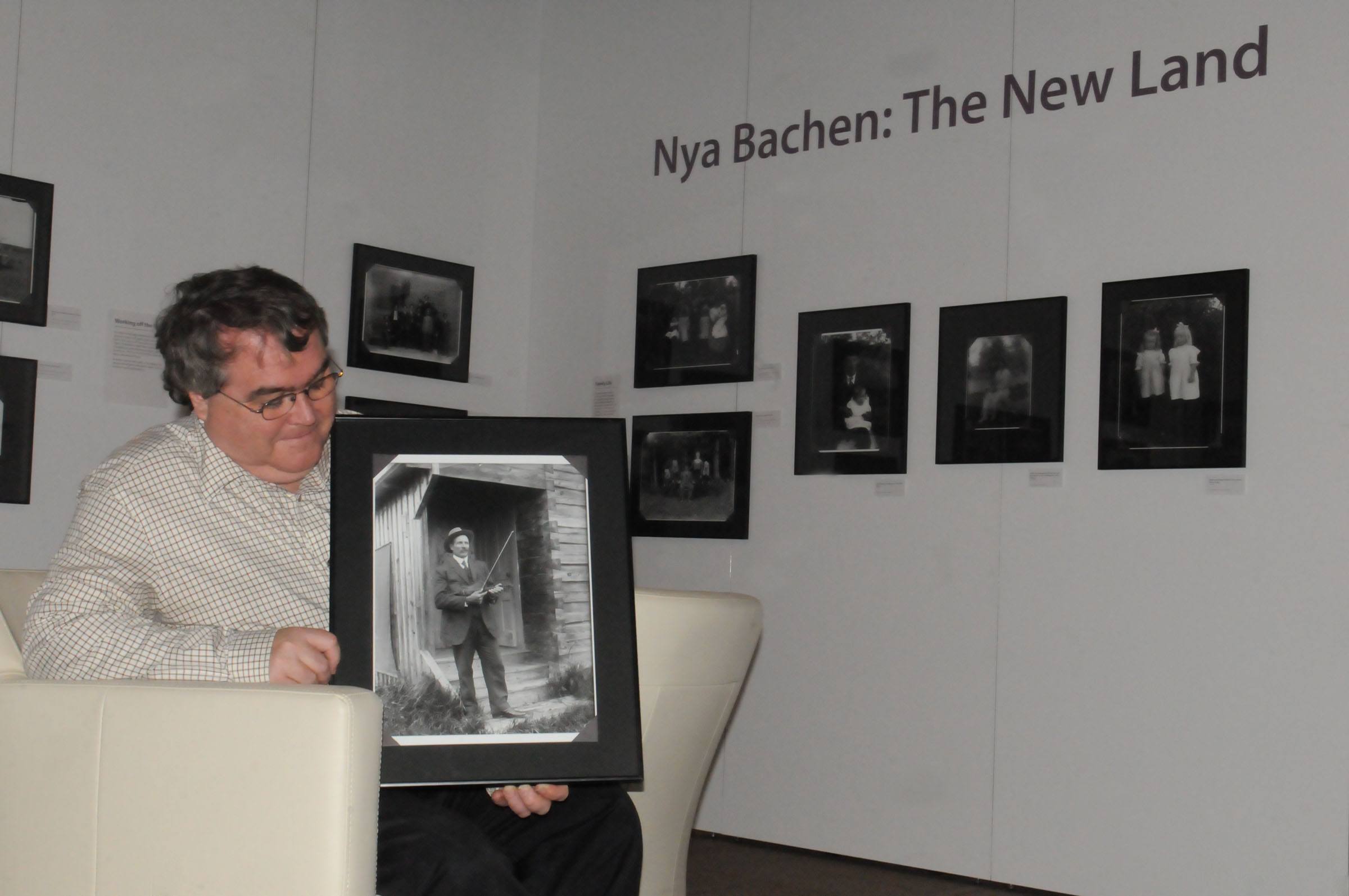A fascinating and unique display reflecting a long ago period is currently on display at the Red Deer Museum + Art Gallery.
Featuring photos taken by Bert Fors, Nya Backen – The New Land is being shown through to Jan. 9.
Fors arrived in Central Alberta from Sweden in the early 1890s, and quickly showed a keen talent for photographing family, friends and the changing community around him.
“He and his family settled in the Burnt Lake district which is between Red Deer and Sylvan Lake,” explains Michael Dawe, local historian and the one who selected the exhibit photos from a collection numbering about 200 portraits.
Originally, Ada Fors Bergstrom’s (Fors’ sister) estate had loaned 180 dry glass plate negatives to the Archives in 1979 and 1991. They were eventually donated in 2001. Museum staff recently digitized and re-housed the glass plate negatives.
“He really was quite a remarkable person, and had a real talent for photography and capturing images of people in the largely Swedish and Scandinavian communities around him,” says Dawe of Fors’ striking collection.
Images cover the gamut from portraits of homes, farms and clothing styles particularly of Swedish immigrant communities. It’s a fascinating and rare look into a time that wasn’t commonly captured photographically.
“A lot of people saw the emergence of the frontier, but very few left a permanent record,” says Dawe, emphasizing the uniqueness of what Fors spent so much time doing. “The chances of anyone else coming in and taking pictures when they first arrived were pretty small.”
Upon arrival in the area, the Fors family built a log cabin and settled into a life on the farm. When Bert Fors turned 18, he decided to take out his own homestead. He headed west to the New Hill area which was originally called Nya Bachen by the Swedish settlers in the district. This is southwest of Sylvan Lake, near the Eckville area.
He later bought land directly south of Sylvan Lake in a district called Centerville. Dawe said that Fors was very much interested in farming, gardening and horticulture. But there was always time to venture out and capture stellar images via his trusty camera equipment.
He also clearly had a knack for setting up a shot and capturing the personalities of his subjects.
“Another thing about his photographs is that in contrast to when folks would go into town to a professional photographer with artificial backgrounds, he took photos of people at their homes and in their communities,” says Dawe. “This provided a more naturalized, contextualized setting and is one of the things that makes the photos even more powerful.”
Fors never married, but remained nearby his growing extended family. He was also committed to the local community as his photos show so well.
“He was very active in the community, and when you look at the pictures you see that he obviously had made connections with the people around him.”
Fors died in 1968 and is buried in the Burnt Lake Cemetery.
“He seemed to be a man that had a real interest in people, and an interest in helping them keep the memories of these years alive.”
For more information, check out www.reddeermuseum.com or call 403-309-8405.
mweber@reddeerexpress.com



